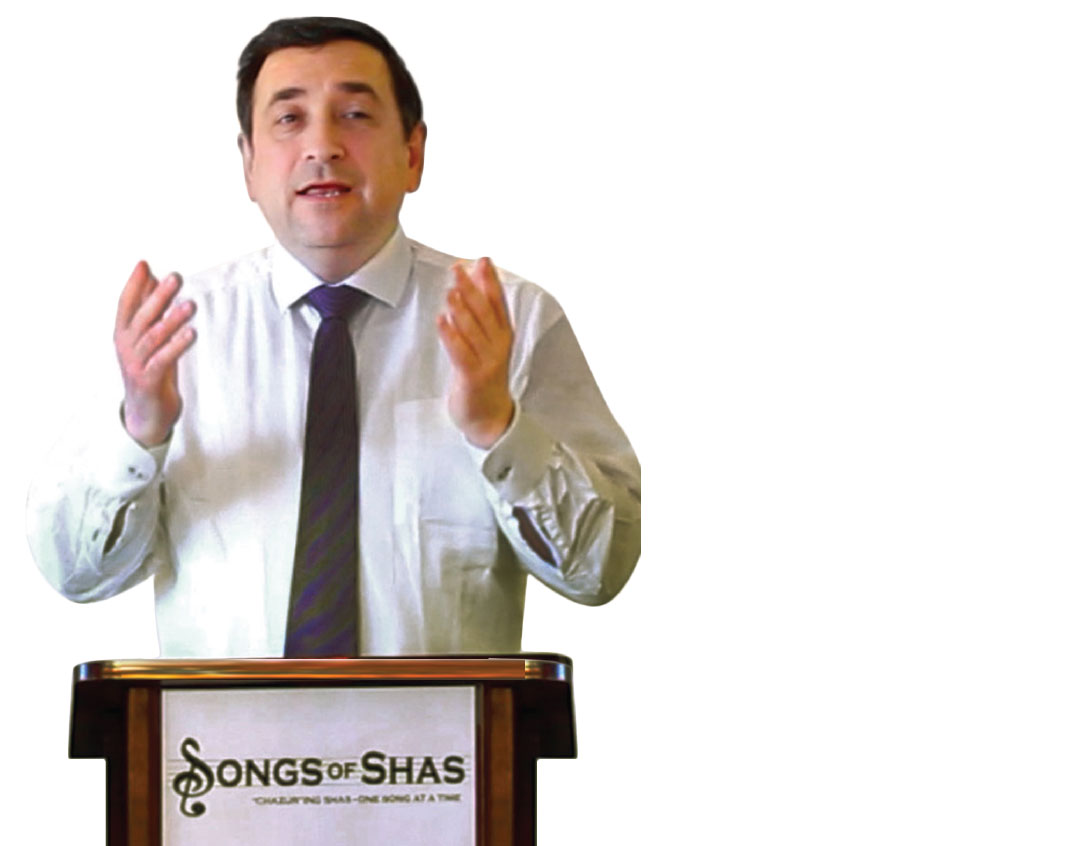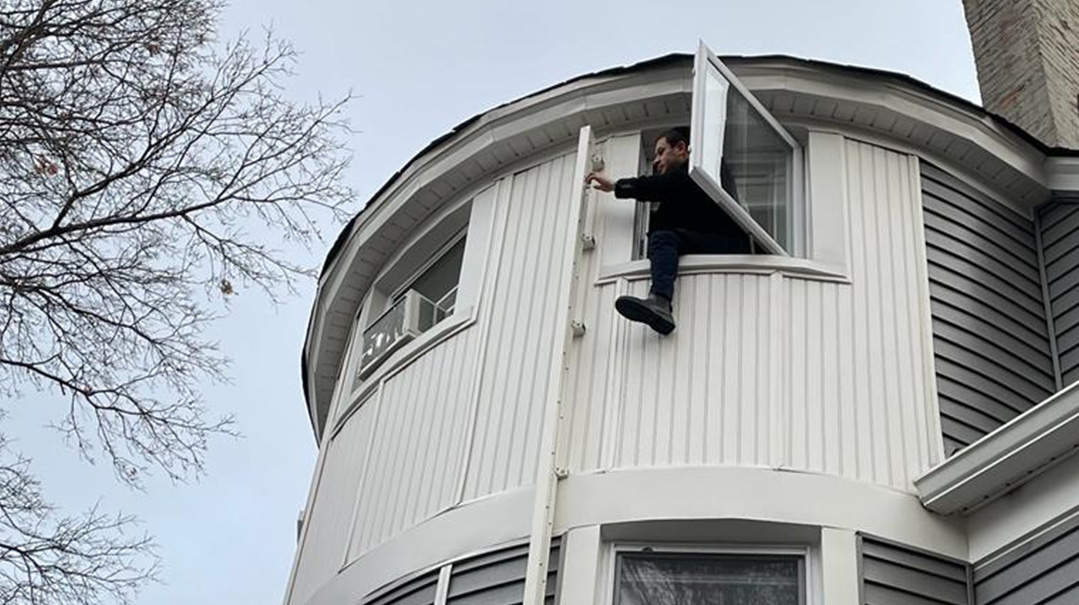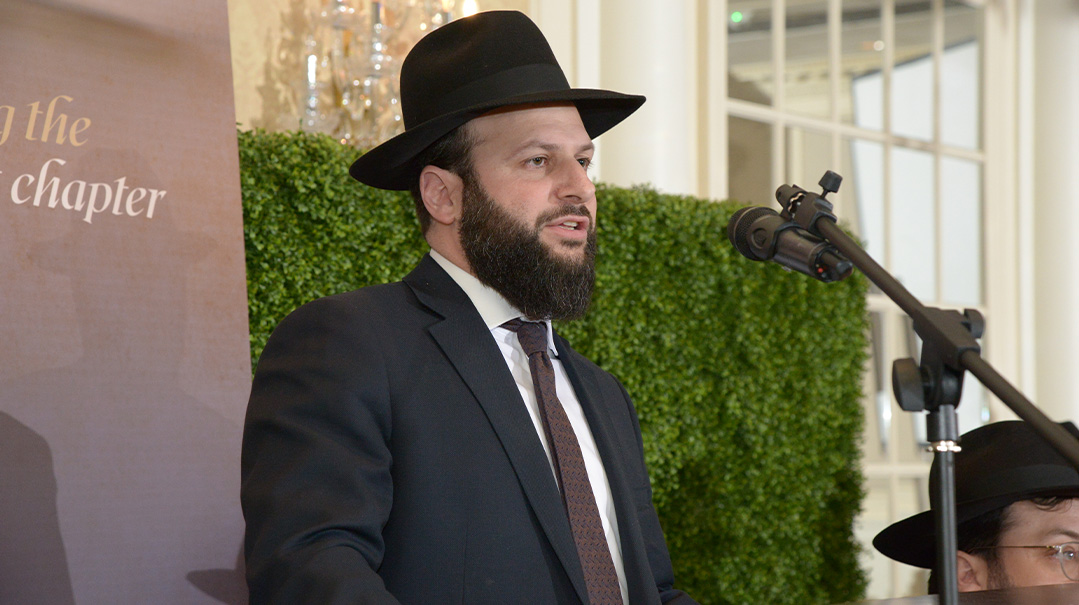10 Questions for Yossi Gleiberman


Y
ossi Gleiberman is the composer of the Songs of Shas series. The “Song of Chullin” was released Erev Pesach in conjunction with the siyum daf yomi on Chullin.
He’s based in Brooklyn, New York.
1 What are the Songs of Shas?
A series of videoed melodies that reviews the major themes and yesodos of each masechta as we learn it in the daf yomi cycle — in rhyme. The songs are a perfect way to chazzer a masechta you just spent months learning, because the stanzas trigger memories of entire concepts. They help you recall the combination of the challenge, frustration, and pleasure of learning the masechta, and of course, perhaps most important, the simchah and passion you feel when you’re privileged to learn Torah.
2 How did you get started?
Two summers ago, I began thinking about how to convey the simchah I was feeling about an upcoming personal siyum haShas. But I was also feeling a little disheartened, because even though I’ve been learning daf yomi for almost 30 years, I wondered how much I’d been able to retain. I decided to write down the klalim, the main points and topics I remembered from Berachos, and I came up with a list of 60 to 70 points. Next was a list for Shabbos, then Eiruvin, and so on. Over two weeks, I accumulated pages of yesodos — more than 2,500 — at my kitchen table. Seeing this massive list, tangible proof of what I’d absorbed over years of daily learning, was so encouraging! I was thinking about how to turn these lists into a memorable and entertaining presentation for the siyum, and I recognized that after a fast-paced shiur, it’s virtually impossible to recall each line of a daf, but it is possible to remember the main sugyos. I’ve written grammen for family simchas, so I started playing with the klalim to put together a review of main Shas themes, including a brief synopsis of every masechta. By the end of the summer, I had a 33-minute Shas song with about 800 klalim and phrases.
3 When was the big reveal?
Several months later, at the end of the siyum. I presented the “Song of Shas” video to the crowd. Many Jewish websites in the US linked to it, and it was picked up by Israeli and European websites. More than 30,000 people watched it over the next week or two. E-mails came in from lomdei hadaf, maggidei shiur, and rabbanim from all over the US and from people as far away as Denmark and Australia with encouraging comments, along with requests for hard copies of the lyrics. The feedback was incredible, and I decided to compose a more in-depth review of a single masechta. When we began learning Zevachim, I’d jot down the klalim we’d covered once a week, and when we reached the halfway mark, I began formulating the lyrics. “The Song of Zevachim” was presented to my morning shiurim at the siyum of the masechta, followed by Menachos and now Chullin. Next up: Bechoros.
4 What challenges did you face?
Each song has its own: Zevachim and Menachos deal with concepts that are unfamiliar to many, so the aim was a basic narrative so everyone could gain a good rudimentary understanding. Chullin deals with unique mitzvos — shechitah, shiluach haken, kisui hadam. Most people know the concepts but aren’t too knowledgeable about the details, so I tried to include specifics. The most challenging section is the topic of treifos; there are 18 major categories of problematic animals, and in four short paragraphs, each was mentioned individually. With the first song that I wrote, “The Song of Shas,” my aim was to keep it under half an hour, so I had to cut and cut again. It ended up being 33 minutes, and there was so much more I wanted to include! Hopefully I’ll be able to expound on the abridged content and give each masechta its due.
5 Do you get writer’s block?
Of course! I keep a list of tough or unique words that need a rhyme, and I look at it once or twice a day — at traffic lights, on line in the grocery. I travel a lot for work — I import and export watches, so I’m often on the road or flying — and these songs are always on my mind. I pull out the list often, because you never know when the right jingle will hit you.
6 What’s your favorite stanza?
Any that combines multiple languages — the lashon of the Gemara along with English, Yiddish, or Hebrew — because that adds to the uniqueness of the phrases and lyrics. I try to keep the rhymes entertaining and to maintain interest in these fast-paced presentations by including several puns or cute phrases. I used the traditional mitzvah tantz tune, it’s a personal favorite, one I used nine years ago to call my father up to the mitzvah tantz of our oldest son.
7 What’s the most common question you’re asked?
Why I left out a particular phrase or topic from a song — and it’s a good question! I need to keep the songs to under 20 minutes. Yes, it’s challenging to leave out important concepts, but a longer presentation might not be well received.
8 Going forward, what’s your goal?
To continue adding a song for each masechta. The songs are a great way to gain a brief overview of a new masechta or to chazzer a Gemara you learned, and in just 15 to 20 minutes, you can review many of the main points of an entire masechta, even if you learned it a few months or years ago. For those who learn the daf and sometimes feel disappointed they aren’t retaining much in the daily grind, the stanzas can give chizuk that yes, I have become familiar with concepts people who don’t learn all of Shas don’t attain. Most of all, I’m hoping they can rekindle the geshmak they felt when they initially learned that masechta.
9 Do you do this alone or with a team?
Someone types and proofreads each song along the way. Once it’s complete, my uncle, Rabbi Yisroel Berger, a noted daf yomi maggid shiur from Kensington, reviews the lyrics. Before making the video of the song, I practice so I can present the song clearly, and then someone videotapes me in our office boardroom.
10 What kind of feedback have you gotten?
An elderly man approached me this winter and asked if I was the “Shas video man.” When I confirmed I was, he grabbed me and kissed me. With tears in his eyes, he explained he lives alone, and whenever he feels down, he plays the “Song of Shas,” and it makes him want to dance. Rabbi Eytan Feiner e-mailed, “Your melodies wake up the neshamah to want to master kol haTorah kula!” Rabbi Fischel Schachter e-mailed that the “Song of Shas” brought tears to his eyes — he felt like it was a diary of the last seven years of his life. Recently, a rebbi in a local yeshivah asked if I could put together the “Song of Bava Metzia” for his shiur’s end-of-year siyum. I told him that based on the current timetable, he can expect it in four to five years.
(Originally featured in Mishpacha, Issue 757)
Oops! We could not locate your form.







